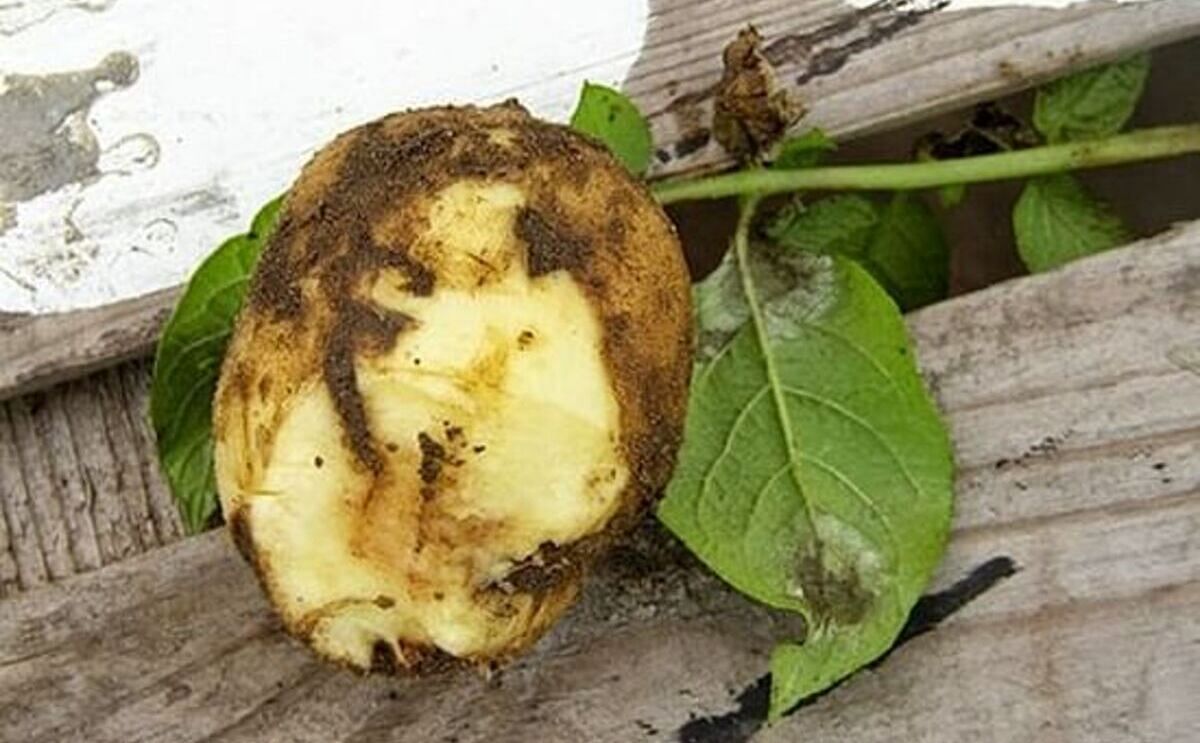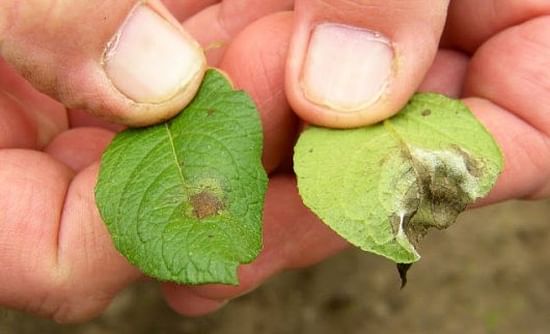New resistance gene against potato late blight identified
New resistance gene against potato late blight identified

In this week 'Nature Plants', scientists from Wageningen University, The Netherlands, and The Sainsbury Laboratory in Norwich, UK, report the identification of a resistance gene that enhances resistance against potato late blight from a South American wild relative of cultivated potatoes.
The gene targets elicitin, a conserved protein with an important biological function, making it less likely that the pathogen will evolve to evade resistance.
Vivianne Vleeshouwers, breeding research expert at Wageningen University, is one of the leading scientists in the team responsible for this breakthrough.
Vleeshouwers: ”We identified a gene responsible for a totally new line of defence in wild relatives of potato. We hope that this will help us to tackle late blight.”

Symptoms of infection by Phytophthora in leaves of susceptible potato cultivars
Major threat to crops worldwide
Phytophthora infestans, the cause of the world wide devastating potato late blight disease, is infamous for triggering the Irish famine. This widespread pathogen is still a major threat to crops worldwide. The international team of scientists searched the germplasm of wild members of the Solanum family (which includes potato) looking for genes that responded to elicitins, so called ‘conserved’ proteins from the blight pathogen.
Vleeshouwers: “These proteins hardly change in time and during species diversification because their role is crucial and their composition has been optimised during earlier evolution. Resistance enhanced by action against this type of pathogen proteins would make it less likely that the pathogen will evolve to overcome the resistance.”
10-year search
After a 10-year search, the scientists found one such gene, ELR (Elicitin Resistance) which encodes a receptor-like protein in Solanum microdontum. Plants contain many of these cell surface receptors that constitute the first line of immune defence, like an array of radar antennas, each one tuned to a different but conserved feature of the invading pathogens.
ELR gene
The simultaneous presence of ELR and elicitin triggers cell death at the site of infection, a powerful plant defence mechanism that restricts the progress of the pathogen. Transfer of the ELR gene into cultivated potato made it more resistant to several strains of blight, opening new strategies for breeding a broad and durable resistance in potato varieties, increasing food security and reducing the use of fungicides.







